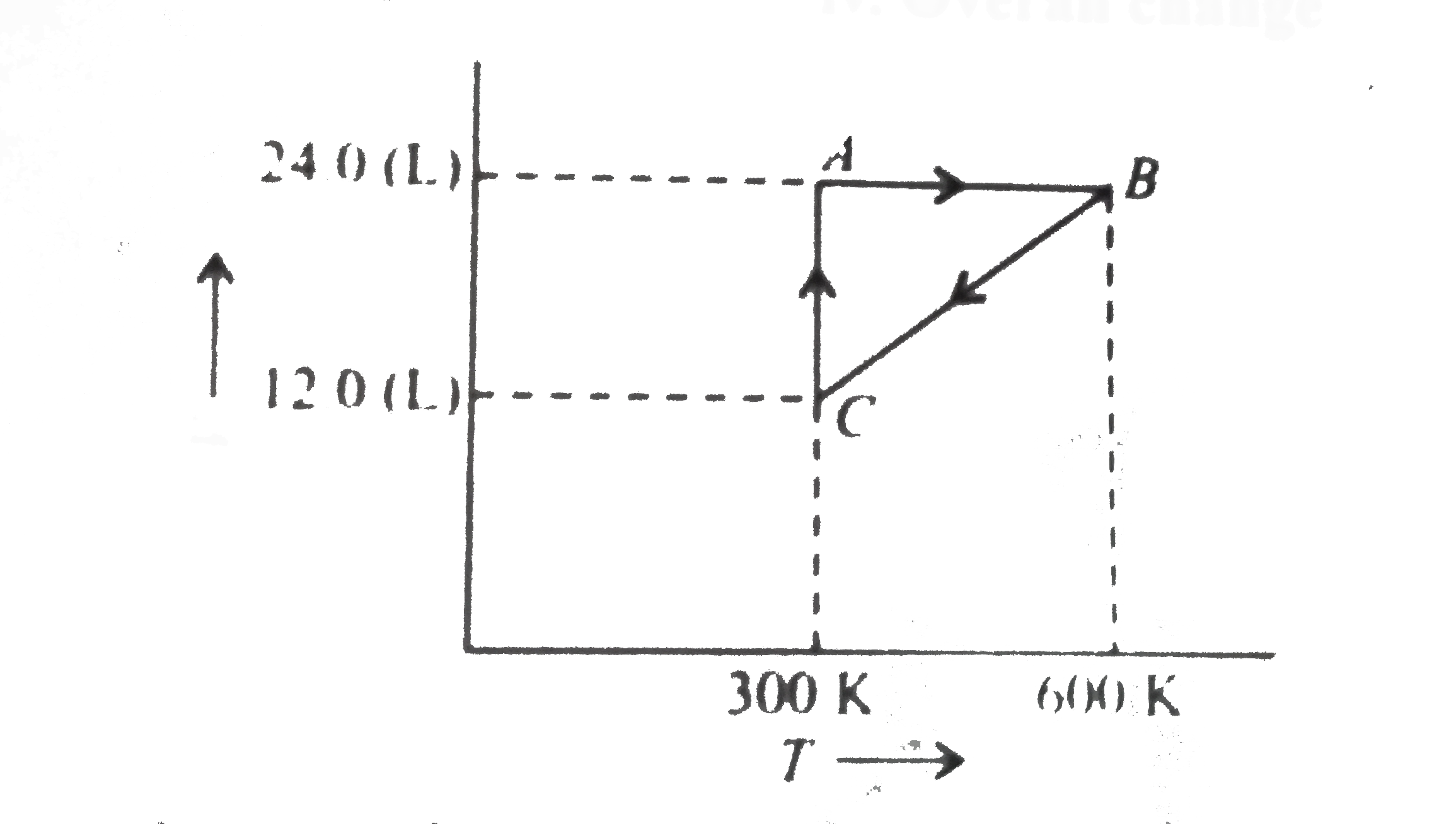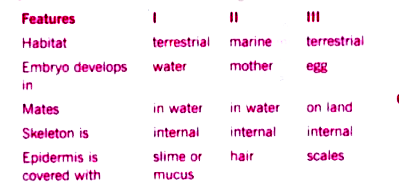Given below is the schematic diagram of Calvin Cycle which completes in three stages.
a. State the three stages of Calvin Cycle.
b. Calculate the energy budget for eàch stage to synthesise one molecule of glucose during the process.
'(##VPU_HSS_BIO_XI_C13_E02_005_Q01##)'
a. Carboxylation, reduction, regeneration b. $12 \mathrm(ATP)$ to produce 12 molecules of triphosphate from 3 -phosphoglycerate. 12 NADH to reduce 3 PGA into triose phosphate. 6 ATP to regenerate 6 molecules of RuBP.
Similar Questions
One made of an ideal gas is put through a series of changes as shown in the graph in which A,B, and C, mark the three stages of the system. At each stage the variables are shown in the graph.
a. Calculate the pressure at three stages of system.
b. Name the process during the following chnages:
i. A to B ii. B to C
iii. CtoA iv. Overall change

View SolutionOne made of an ideal gas is put through a series of changes as shown in the graph in which A,B, and C, mark the three stages of the system. At each stage the variables are shown in the graph.
a. Calculate the pressure at three stages of system.
b. Name the process during the following chnages:
i. A to B ii. B to C
iii. CtoA iv. Overall change

View Solution
Knowledge Check
Answer the questions on the basis of the information given below.
In a sports event, six teams (A, B, C, D, E and F) are competing against each other. Matches are scheduled in two stages. Each team plays three matches in Stage-I and two matches in Stage-II. No team plays against the same team more than once in the event. No ties are permitted in any of the matches. The observations after the completion of Stage-I and Stage-II are as given below.
Stage-I:
One team won all the three matches
Two teams lost all the matches.
D lost to A but won against C and F.
E lost to B but won against C and F.
B lost at least one match.
F did not play against the top team of Stage-I
Stage-II:
The leader of Stage-I lost the next two matches.
Of the two teams at the bottom after Stage-I, one team won both matches, while the other lost both matches.
One more team lost both matches in Stage-II.
The two teams that defeated the leader of Stage-I are:AF & DBE & FCB & DDE & DAnswer the questions on the basis of the information given below.
In a sports event, six teams (A, B, C, D, E and F) are competing against each other. Matches are scheduled in two stages. Each team plays three matches in Stage-I and two matches in Stage-II. No team plays against the same team more than once in the event. No ties are permitted in any of the matches. The observations after the completion of Stage-I and Stage-II are as given below.
Stage-I:
One team won all the three matches
Two teams lost all the matches.
D lost to A but won against C and F.
E lost to B but won against C and F.
B lost at least one match.
F did not play against the top team of Stage-I
Stage-II:
The leader of Stage-I lost the next two matches.
Of the two teams at the bottom after Stage-I, one team won both matches, while the other lost both matches.
One more team lost both matches in Stage-II.
The only team (s) that won both the matches in Stage-II is (are):ABBE & FCA, E & FDB, E & FAnswer the questions on the basis of the information given below.
In a sports event, six teams (A, B, C, D, E and F) are competing against each other. Matches are scheduled in two stages. Each team plays three matches in Stage-I and two matches in Stage-II. No team plays against the same team more than once in the event. No ties are permitted in any of the matches. The observations after the completion of Stage-I and Stage-II are as given below.
Stage-I:
One team won all the three matches
Two teams lost all the matches.
D lost to A but won against C and F.
E lost to B but won against C and F.
B lost at least one match.
F did not play against the top team of Stage-I
Stage-II:
The leader of Stage-I lost the next two matches.
Of the two teams at the bottom after Stage-I, one team won both matches, while the other lost both matches.
One more team lost both matches in Stage-II.
The team (s) with the most wins in the event is (are):AABA & CCFDE
Characteristics of three animals are given below :

(a) To which group of animals does each of these belong?
(b) Which of these animals is most likely to have gills at certain stages of its life cycle ?
(c) Name one animal for each group that may fulfill these characteristics .
View SolutionAnswer the questions on the basis of the information given below.
In a sports event, six teams (A, B, C, D, E and F) are competing against each other. Matches are scheduled in two stages. Each team plays three matches in Stage-I and two matches in Stage-II. No team plays against the same team more than once in the event. No ties are permitted in any of the matches. The observations after the completion of Stage-I and Stage-II are as given below.
Stage-I:
One team won all the three matches
Two teams lost all the matches.
D lost to A but won against C and F.
E lost to B but won against C and F.
B lost at least one match.
F did not play against the top team of Stage-I
Stage-II:
The leader of Stage-I lost the next two matches.
Of the two teams at the bottom after Stage-I, one team won both matches, while the other lost both matches.
One more team lost both matches in Stage-II.
The teams that won exactly two matches in the event are :
View SolutionThe below diagram is the cyclic series of reactions that occurs during carbon fixation stage of photosynthesis

(i) Carbon dioxide is taken into the cycle at stage A___
(ii) Hydrogen from reduced hydrogen acceptor is used at stage B_____
(iii) Energy from ATP used to drive stage C___
(iv) The substance formed at position Y is D___
(v) If one molecule of substance Y is released per cycle, the cycle must turn E___ times for one molecule of sucrose (C12H22O11) to be built up at position Z.
View SolutionThe below diagram is the cyclic series of reactions that occurs during carbon fixation stage of photosynthesis

(i) Carbon dioxide is taken into the cycle at stage A___
(ii) Hydrogen from reduced hydrogen acceptor is used at stage B_____
(iii) Energy from ATP used to drive stage C___
(iv) The substance formed at position Y is D___
(v) If one molecule of substance Y is released per cycle, the cycle must turn E___ times for one molecule of sucrose (C12H22O11) to be built up at position Z.
View SolutionThe Calvin cycle proceeds in three stages
(1) Reduction, during which carbohydrate is formed at the expense of the photochemically made ATP and NADPH
(2) Regeneration, during which the carbon dioxide acceptor ribulose-1,5-biphosphate is formed
(3) Carboxylation during which carbon dioxide combines with ribulose-1,5-biphoshate is formed
View Solution
